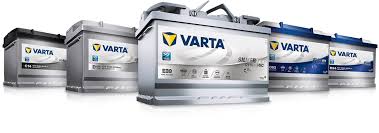The battery should be examined for cleanliness at regular intervals.
- Read the Safety page.
- Keep cell terminals and connectors free of dust and corrosion. Terminal corrosion may affect the performance of the battery and could present a safety hazard. Should corrosion be observed, disconnect the battery, unbolt and remove the connectors, and remove the corrosion by brushing the terminals and connectors with a dilute solution of baking soda and water (sodium bicarbonate). Reapply an anti-oxidizing grease before reconnecting and bolting the connectors. Always maintain proper records.
DO NOT UNDER ANY CIRCUMSTANCES REMOVE PRESSURE RELIEF VALVES AND NEVER ADD WATER.
Further Resources & Downloads:
Battery Storage
To ensure our batteries safely reach their maximum shelf life, the average annual storage temperature should be 15°C. The short-term storage temperature must not exceed 25°C or battery life may be affected.
Of course, batteries should be sold according to the first-in, first-out principle. To make it easy to check battery age, all VARTA® branded products are colour coded according to the date of manufacture; see the table we’ve included.
- READ THE SAFETY SECTION.
- Remove the battery from the vehicle.
- Find a cool, dry place to keep your battery.
- Make sure the battery is fully charged and recharge it approximately every two months.
- Clean any terminal corrosion may that affect the performance of the battery and could present a safety hazard. Remove the corrosion by brushing the terminals and connectors with a dilute solution of baking soda and water (sodium bicarbonate). Reapply an anti-oxidizing grease before reconnecting and bolting the connectors.
Seasonal Use Instructions

Autumn: Prior to the rest period
- Charge the battery completely, switch off all electrical devices and, if possible, disconnect the battery.
- Store in a cool, dry place.
- Store batteries fully charged.
- Fully charged batteries can be stored even at temperatures well below zero. Partially charged batteries can freeze at temperatures just below zero.

- Check the state of charge/voltage regularly.
- Should the voltage drop below 12.4 V, recharge the battery.

Spring/Summer: Prior to the rest period
- Check the state of charge/voltage regularly
- Should the voltage drop below 12,4 V, recharge the battery
Powersports Batteries Maintenance Tips
- Check the acid level (Powersports Freshpack only) and top up with distilled wáter.
- Keep the battery and terminals clean
- Check the cables and connectors for loose connections and check the casing for damage.
- VARTA® batteries come with full usage and maintenance instructions.
Long periods of disuse
Sulphation during long periods of disuse, usually during off-season months, is one of the main causes of motorcycle battery malfunction. Sulphates released as the battery discharges collect on the plates and harden, causing battery performance to suffer or fail completely. That’s why it’s extremely important to observe the following guidelines:
- Charge the battery and store it in a dry, clean place. Disconnect the battery’s negative terminal from the motorcycle.
- Regularly check the state of charge and recharge if necessary.
Battery Off-Season Care and Storage
Because of the high purity lead grid in the VARTA® battery, it has a self-discharge rate much lower than conventional flat-plate batteries. This means the VARTA® battery can sit for longer periods, retaining enough charge to start your vehicle when stored and maintained properly.
Before storing your vehicle, check the battery voltage. If the voltage is below 12.5V, charge your battery and follow a maintenance schedule that includes charging a minimum of once every three months. Keep fully charged battery stored in a dry, cool area away from rain, sunlight, furnace or heat source.
Battery Maintenance
The VARTA® battery is truly maintenance-free. When it’s charged properly, you won’t have to worry about corrosion or shortened battery life. Inspect your battery terminal connections every now and then to ensure they are clean, snug and protected from the elements.
Tips for Battery Maintenance
- Batteries will lose power in storage, and may need to be recharged every three months.
- The charge voltage should not exceed 15.0V during usage.
- The battery should be fully charged after a discharge.It should not be kept under the discharging situation.
- The battery connector contact points should be kept clean to avoid a short circuit.The battery should be kept away from fire.
- Never lean over battery when testing or charging.
Exercise caution when working with metallic tools or conductors to prevent short circuits and sparks.
Is there preventative maintenance I can do for my battery?
READ THE SAFETY SECTION
The battery should be examined for cleanliness at regular intervals. Keep cell terminals and connectors free of dust and corrosion. Terminal corrosion may affect the performance of the battery and could present a safety hazard. Should corrosion be observed, disconnect the battery, unbolt and remove the connectors, and remove the corrosion by brushing the terminals and connectors with a dilute solution of baking soda and water (sodium bicarbonate). Reapply an anti-oxidizing grease before reconnecting and bolting the connectors. Always maintain proper records.
DO NOT UNDER ANY CIRCUMSTANCES REMOVE PRESSURE RELIEF VALVES AND NEVER ADD WATER.


